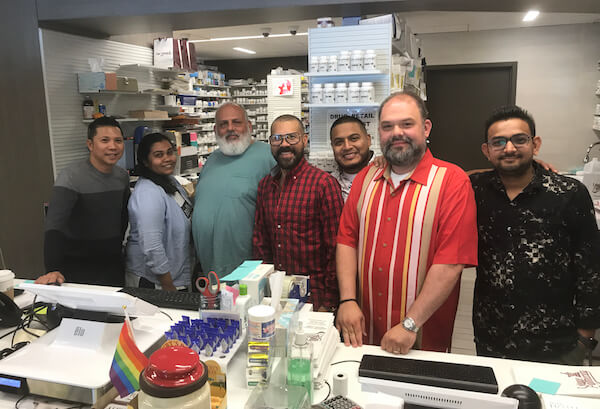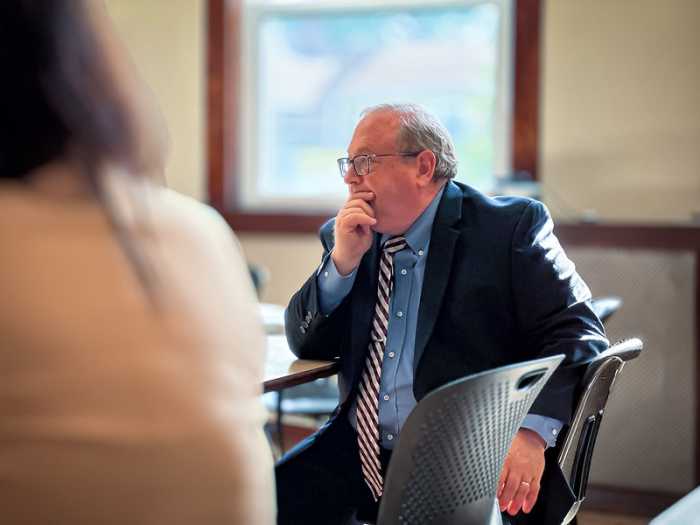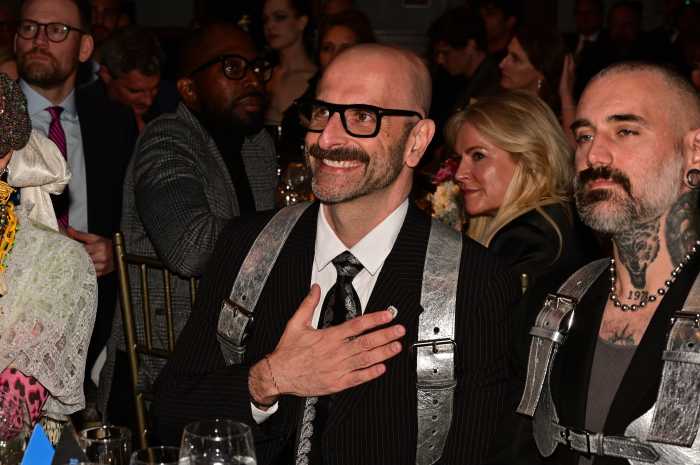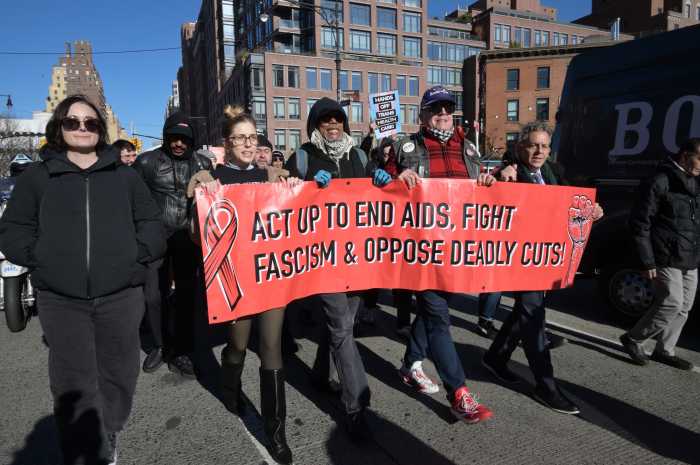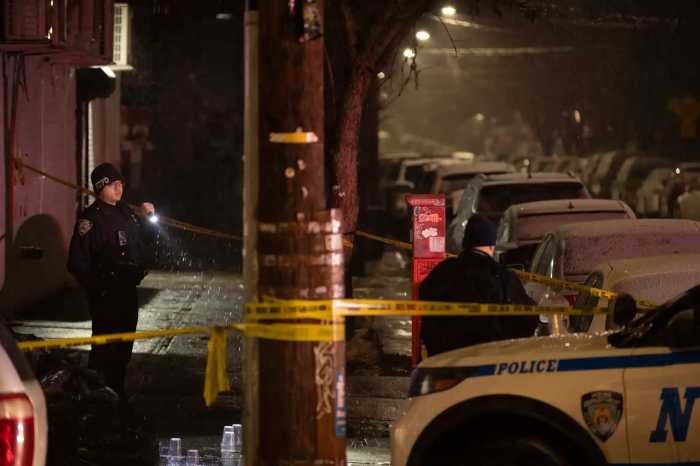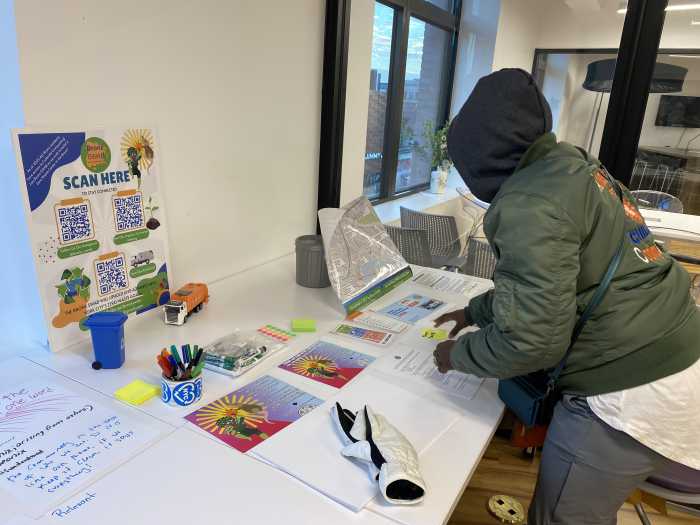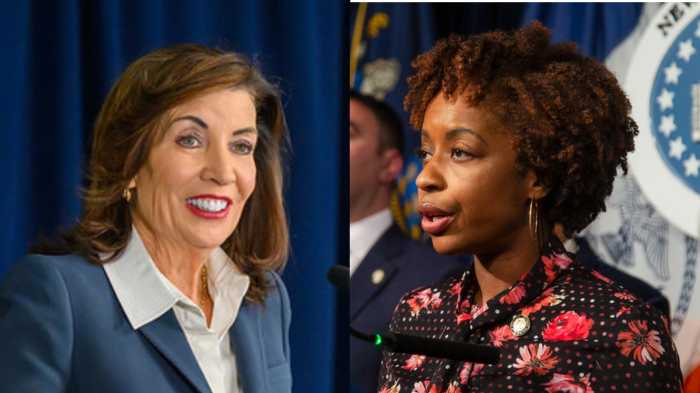The Village Apothecary is part of a state pilot program to get pre-exposure prophylaxis, or PEP, into the hands of people with a potential recent exposure to HIV. | GABE HERMAN
The Village Apothecary, a proudly independent pharmacy, has been a West Village fixture since opening 35 years ago. Which means it came of age just at the height of the city’s HIV crisis.
Now the pharmacy, at Bleecker and West 10th Streets, is aiming to build on that legacy as it expands to offer new health programs, remodels its store, and evolves with the times in other ways, as well.
With a staff of about a dozen, several of them have become reliable faces in the neighborhood.
“There’s a definite connection,” said pharmacist Norman Saban, who remembers the exact day he started at the Apothecary: May 14, 1985
Independent Bleecker Street pharmacy, long on AIDS frontline, part of PEP pilot program
His early recollections of his time at the Village Apothecary include the hundreds of people who came to receive AZT, at the time a new drug that many other pharmacies didn’t carry. He recalls the store’s founder, Michael Konnon, hooking the pharmacy up early with the state’s AIDS Drug Assistance Program (ADAP), which provided support for uninsured and underinsured HIV-positive people. ADAP remains the way many Village Apothecary customers pay for their anti-HIV drugs.
Saban said he remembers opening hundreds of boxes of AZT medication from ADAP every day in the ’80s.
“It was scary,” he said. “A lot of sick people.”
In the decades since, the Village Apothecary has continued to provide medicine and personalized care to customers living with HIV and AIDS, often coordinating with local doctors and hospitals. For this and its general health services to the community, Mayor Bill de Blasio on January 18 this year issued an official proclamation dubbing it “Village Apothecary Day.”
The Apothecary has recently joined a new state initiative called PEP 4 HIV Prevention, a pilot effort to connect people who have had a potential recent exposure to the virus with preventive medication to avoid infection. The treatment must start within 72 hours of exposure, and involves a seven-day regiment. The pharmacy refers those customers to a local doctor for further consultation.
John Kaliabakos, the director of the Village Apothecary’s pharmacy services, said that although people can already go to walk-in clinics for the same treatment, some might be more comfortable simply visiting their local pharmacy. Kaliabakos, who has been at the Apothecary for 25 years, said the program, with signs in the store windows, increases public awareness of PEP, or post-exposure prophylaxis, which many people still don’t know about.
The pilot program, run through the state Department of Health’s AIDS Institute, started a couple of months ago and will run through September. If it is judged a success, it will be continued and expanded.
“It’s very early,” Kaliabakos of his experience with the pilot effort. “There have only been a very small amount of people that have come in for that. But even if you prevent one case, it’s a success.”
He hopes the pilot program will show the same prevention benefits that the availability of clean syringes has had on injection drug users. The pharmacy has participated in the state’s Expanded Syringe Program since its start in 2000.
Kaliabakos voiced pride in the Apothecary’s work in fighting HIV.
“We’ve always been on the frontlines in the sense that we were one of the first places to stock AZT,” he noted. “As soon as a new HIV drug is available, we have it that same day. We’re coordinating with doctors that are always trying to get the newest thing out there, so any doctor that prescribes that knows that if there’s 30 HIV drugs out there, we have it on the shelf, no matter what. If it’s available, we have it. So in that sense, we always try to be ahead of the game.”
Village Apothecary staff members, from left, Arnel Molina, Shaili Patel, Norman Saban, Eric Lora, Alex Chavez, John Kaliabakos, and Himanshu Patel. | GABE HERMAN
The Apothecary worked with the nearby St. Vincent’s Hospital until it was shuttered eight years ago, and continues to coordinate with Bailey House, a nonprofit that has provided housing for people living with AIDS on Christopher Street for more than 30 years.
Kaliabakos noted that the pharmacy works with its customers to ensure that they have the medications they need and understand the schedule for taking them. They also have to deal with insurance companies’ complicated reimbursement policies.
“A lot of our stuff is fighting with insurance companies for people, unfortunately,” he said.
Kaliabakos said disputes come up regarding all types of medications, but noted that HIV drugs are among the most expensive medications the pharmacy handles.
“We’ll try to either get them covered with supplemental ADAP, or we’ll try to deal with the manufacturers to get them coupons, or some kind of supplemental coverage,” he explained. “We try to take the cost out of the equation, to make sure they get what they need.”
Vijay Desai has owned the Apothecary since 2012 and is intent on maintaining the shop’s values.
“We want to keep that family, community-owned presence here in the Village,” he said.
Desai discussed two recent initiatives — a new location on Eight Avenue at 24th Street, called the Chelsea Apothecary, and medication delivery anywhere in Manhattan below 110th Street.
Despite soaring West Village rents that have left vacant storefronts on Bleecker Street, Desai said the Apothecary is in good shape thanks to great community support.
“I’m feeling good about us,” he said, “but what’s going on around us is disturbing.”
Recent renovations to the Village Apothecary — including a dark wood aesthetic inside, an expanded pharmacy area, and upgrades to all its systems — are nearly complete. Keeping the business open during construction was a challenge, Desai admitted.
“It made it tough on us and also our customers,” he said. “But they’re so loyal to us that, we got to this point, we’re good. I’m very happy with how it’s looking, and I think it sets us up for the next 30 years of the Village.”

